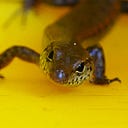Member-only story
What’s the Buzz?
Stalking a nectar thief
About thirty years ago, the European Buff-tailed Bumblebee (Bombus terrestris) appeared in Tasmania. It might have arrived accidentally from New Zealand, where it was introduced to assist in crop pollination, or been smuggled in to make production easier for tomato growers. Unlike mainland Australia, Tasmania has no large native bees that can do the same job.
On my visits to Tasmania, I’ve never managed to get a decent photo of these beautiful insects. They are usually buzzing around the clover, too close to the ground for me.
I photographed this bee in southern Chile, where it was also introduced to assist commercial production. Chile has one native species of bumblebee, Bombus dahlbomii, a huge ginger-furred buzzer with black legs and smoky grey wings, but its population has declined following the arrival of the Buff-tailed Bumblebee. We saw no ginger bees during our trip to Chile.
Although bumblebees are effective at pollinating many plants, they are also nectar thieves. When landing on flowers that are too narrow or too deep, the bee will bite through the petals and drink nectar directly from the base. That way they bypass the pollen-laden anthers. The bee in this photo appears to be doing this. There is such thing as a free meal.
